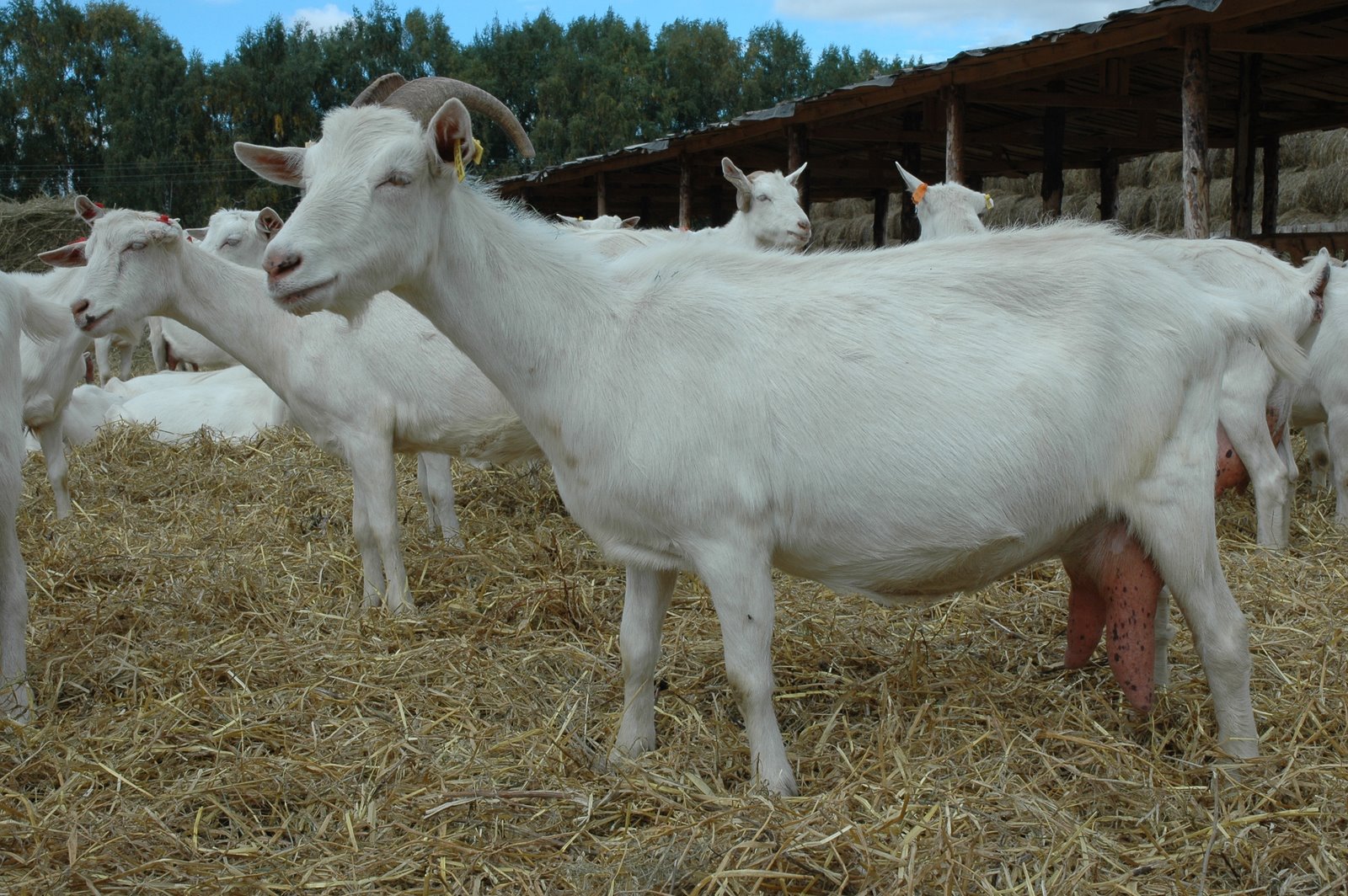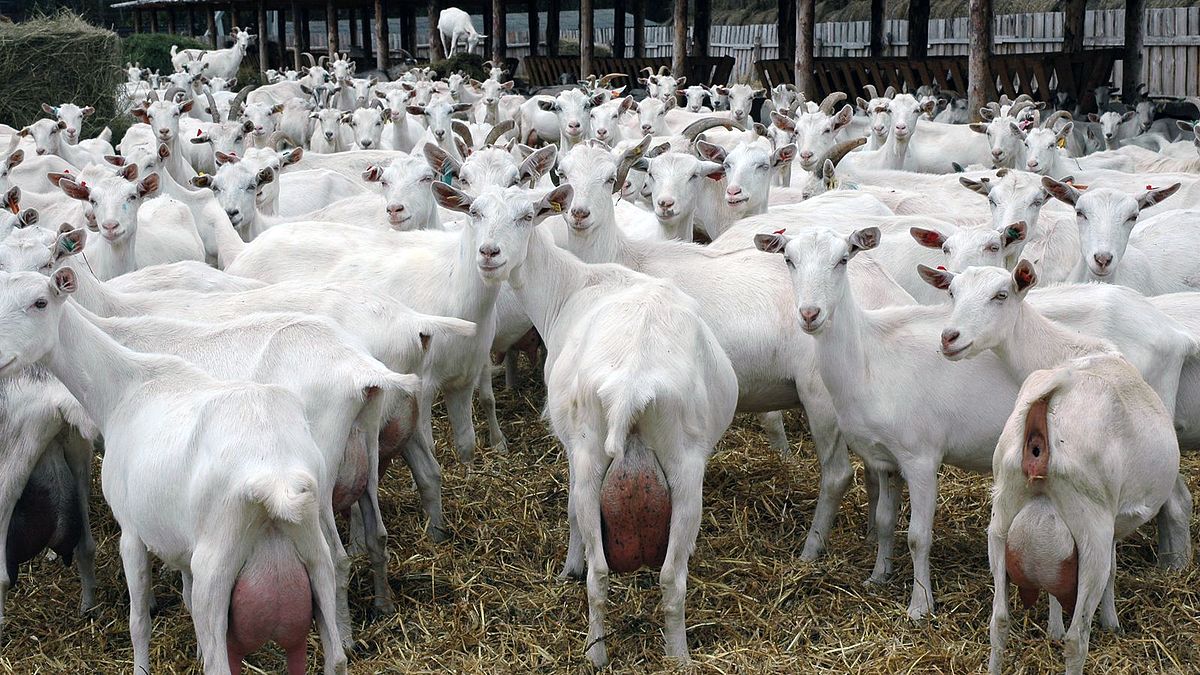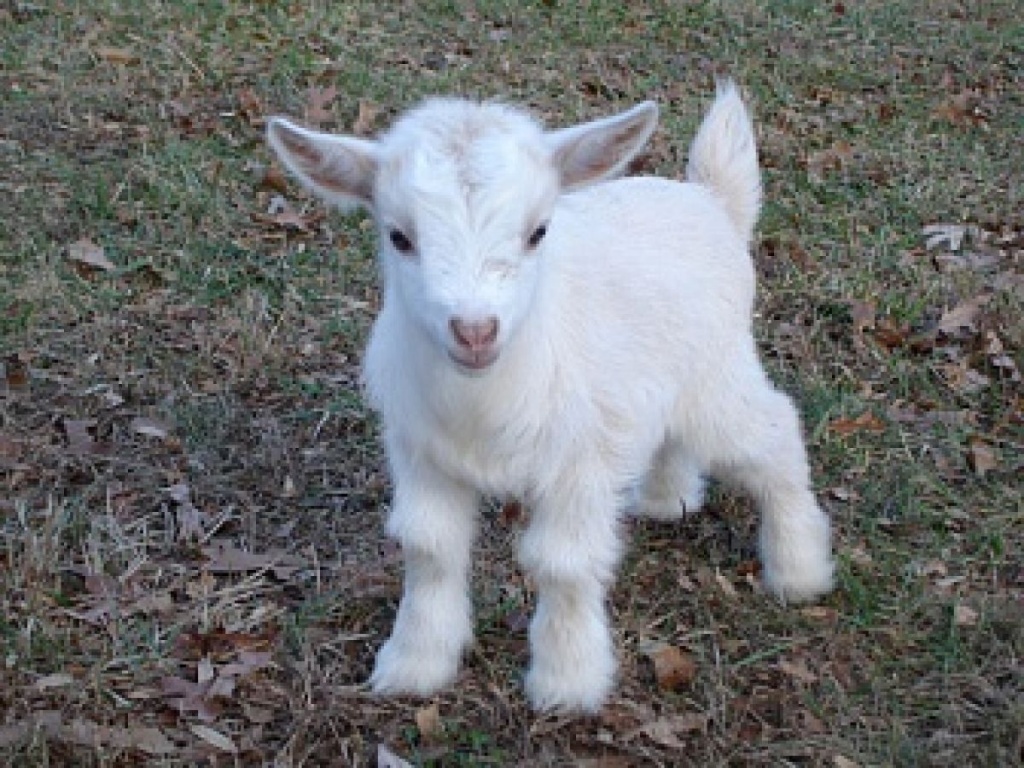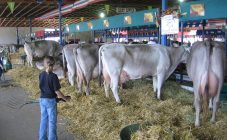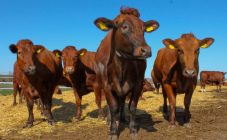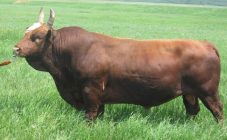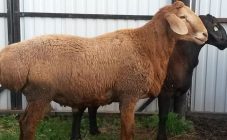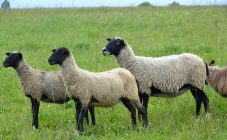The Zaanenthal, or Zaanen, breed of goats was obtained by selecting and crossing the best individuals. The name of the goat was due to the place of their origin - this species comes from Switzerland, in particular, the Zaanental and Simmental valleys. There is no exact data on the pedigree origin, but there is an opinion that simple shepherds were engaged in raising goats. In the 19th century, goats began to spread to other countries, in 1902-1905 they reached Russia.
Appearance
The Zaanen goat is a large, strong animal with a strong, massive bone. Differs in a docile, accommodating character, does not rush to people, makes contact.
Appearance characteristic:
- weight: goat - 55-90 kg, goat - 70-100 kg;
- height: goat - 77 (rump) -78 (withers) cm, goat - 88 (sacrum) -95 (withers) cm;
- narrow head, with a wide, massive forehead;
- ears are large, set vertically, looking to the sides;
- Legs: Strong, straight set, hooves light yellow;
- udder: pear-shaped, large, with well-developed nipples directed forward;
- on a flat, long neck there are outgrowths of "earrings" (not all of them);
- the body is long (81 cm - for a goat, 84 - for a goat), an even back;
- insufficiently developed muscles;
- color: white, small spots on the skin, udder are possible, the coat is shiny, short.
Performance characteristic
The Zaanen breed of goats is considered the most productive and most popular among the huge number of varieties of dairy goats, it is distinguished by average fertility and early maturity. One goat can produce a ton of milk per year. The productivity of goats increases with each lambing, the peak milk yield is reached after 4 years.
The annual milk yield of domestic goats is 600-1200 kg, how much milk the animal will give depends directly on the conditions of maintenance and care. The fat content of milk is average, much lower than the milk of Russian goats - 3.5-4%. The milk yield is 8-11 months.
Fertility - 180-250 kids from a hundred queens. Sexual maturity occurs at 8-10 months, it is desirable to cover closer to a year. Usually there are 2-3 kids in a litter, they grow quickly.
Maintenance and care
Goats are quite demanding in terms of keeping conditions, especially in terms of cleanliness, temperature and air quality. The air must be fresh, the admissible temperature is not lower than +6 ° C in winter.
Goats do not need a lot of space, the main thing is that the room should be warm, without drafts and open winds, regardless of the season. The floor can be concrete, adobe. The presence of wooden loungers is required. Drains, slurry slots are equipped on both sides of the room. The room should be dry and the litter should be changed as needed. Dampness is extremely unacceptable, air humidity is no more than 75%.
The barn should be equipped with a convenient feeder that prevents the feed from falling, and a drinker. Daylight hours - at least 10 hours, in winter it is advisable to maintain it with artificial lighting lamps. A separate stall is recommended for goats.
During pregnancy and after childbirth, it is desirable for a goat to live away from relatives.
Walking in the fresh air is required in both warm and cold seasons. In the summer, goats are completely switched to a pasture type of keeping.
The animal is examined daily for the presence of parasites, wounds.
The diet
High-quality, varied and balanced nutrition has a positive effect on the qualitative and quantitative indicators of milk yield and significantly supports the animal's immunity.
In summer, the main food is succulent meadow grasses, tops (beetroot, cabbage leaves), silage, vegetables and fruits.
In winter, straw and hay are used. Straw is taken from wheat, barley and from buckwheat; meadow grasses are suitable for hay. Every two days, goats are given twig brooms (dried twigs with leaves).
Warm, clean water must be present at all times.
Products must be clean, fresh, moldy, sour table residues should not be given to goats. A small amount of table salt is added daily to the feed.
Breeding and reproduction
Although the goats are ready for fertilization as early as 8-10 months, it is recommended to cover them after reaching one year of age. Almost every female brings 2 kids (80%), in rare cases - 3-5. Goats of the Zaanen breed of goats are born with a weight of 3-4.5 kg (goats, respectively, are larger than goats), they grow very rapidly. Up to six months, the kids are fed whole milk. The main thing in goat breeding is choosing a good male.
The mating is carried out during the hunt (the onset of which is signaled by changed behavior and swelling, redness of the external genital organs). The hunting period is 24-48 hours, repeated hunting occurs after 18-22 days, in rare cases - after 5-9 days. Insemination - within 30-40 days.
Approximately 45 days before the expected lambing, goats are put into dead wood so that further milk productivity does not decrease. Into a dead goat is introduced gradually, daily decreasing the amount of feed and reducing the one-time meal.
The gestation period of a goat is about 150 days. Goats give birth on their own, in most cases without complications. In rare situations, the help of a veterinarian may be required (afterbirth does not go away, weak kids).
Newly born kids are cleansed of mucus from the nose and mouth using a clean cloth, the umbilical cord is tied with a thread, stepping back 2-3 cm from the abdomen, the umbilical cord is cut off with disinfected scissors no closer than 7-9 cm from the abdomen. The tip of the umbilical cord is smeared with iodine and the kid is given to the uterus.
Before feeding the kids for the first time, you need to prepare the goat:
- shaving off the wool around the udder;
- wash the udder and nipples thoroughly with warm water;
- the first 3-4 streams of milk are decanted and the kids are brought up to the udder.
In Saanen goats, the maternal instinct is not developed enough, it is unsafe for the kids to stay with the rest of the animals, it would be advisable to separate them into a prepared cage for several days. During lactation, the goat should be fed a more nutritious, varied diet.
For good fertility of animals, you need to know all the nuances of keeping, feeding and describing the Zaanen goat breed, otherwise you can forget about decent milk yield. With proper care, the animal will become not only a good source of milk, but also a concentration of tasty juicy meat. By the way, one more plus in the Zaanen piggy bank - goats practically do not have a specific smell, unlike their relatives.
